How reading can make your writing better…
I’m always astounded when some author informs me that they don’t read all that much because they want to spend all their time writing. I even read a lot and wrote when I had an intense day job. And I certainly don’t accept the excuse of binge-watching streaming videos or binge-playing computer games. And I also don’t want to hear or see the excuse that it’s because they don’t want to plagiarize other authors’ work. Are you a writer or not? If you’re a writer, you have to be a reader. Reading others’ stories makes writers’ storytelling better. Period.
Reading other fiction doesn’t have to take time away from your own writing or lead to plagiarizing. I can guarantee you that ever story I’ve written is free of plagiarism—theories, plots, characters, dialogues, and setting are all my invention and pieced together to make a unique tale that no one could have written except yours truly.
Yet, after finishing a story, sometimes a long time after, I might return to a story and observe how other writers have influenced my fiction writing. It mostly involves style, not content, but I also realize I’ve answered some long-standing personal questions.
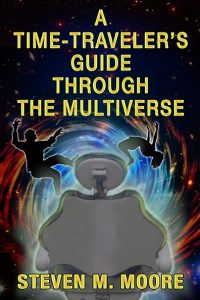 In retrospect, the “Chen & Castilblanco” series of novels was influenced by the hard-boiled style of American crime dramas from the first half of the twentieth century, but only in the sense that I generalized that to establish my minimalist style. That style is often found in my sci-fi tales as well—descriptions of characters and settings, for example, with just enough information so that readers can create their own imagery and sounds as they read, thus participating in the creative process. Also, if a pronoun is obvious, I don’t include it. (That might be more influenced by my mastery of Spanish and my one-time mastery of Russian where the verb form often indicates the pronoun. One doesn’t say, “Tu hablas castellano”; one says, “Hablas castellano.” In Colombia, they often use “castellano” in place of “espanol,” especially in the interior where nearly pure Castilian Spanish is spoken.) I paid homage to those hard-boiled authors of American crime literature in one “space-time jump” found in the sci-fi rom-com A Time Traveler’s Guide through the Multiverse. (Some sci-fi authors also receive homage in that novel as well.)
In retrospect, the “Chen & Castilblanco” series of novels was influenced by the hard-boiled style of American crime dramas from the first half of the twentieth century, but only in the sense that I generalized that to establish my minimalist style. That style is often found in my sci-fi tales as well—descriptions of characters and settings, for example, with just enough information so that readers can create their own imagery and sounds as they read, thus participating in the creative process. Also, if a pronoun is obvious, I don’t include it. (That might be more influenced by my mastery of Spanish and my one-time mastery of Russian where the verb form often indicates the pronoun. One doesn’t say, “Tu hablas castellano”; one says, “Hablas castellano.” In Colombia, they often use “castellano” in place of “espanol,” especially in the interior where nearly pure Castilian Spanish is spoken.) I paid homage to those hard-boiled authors of American crime literature in one “space-time jump” found in the sci-fi rom-com A Time Traveler’s Guide through the Multiverse. (Some sci-fi authors also receive homage in that novel as well.)
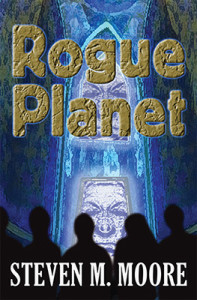 Recently I read J. R. R. Tolkien’s The Hobbit for the first time. (I missed it in my childhood reading.) I decided that fantasy story must have influenced George R. R. Martin’s “Game of Thrones” series. (Does his use of “R. R.” indicate that?) Tolkien’s dragon Smaug is a lot more fun than any of Martin’s. (My review of The Hobbit is found in the blog archive “Book Reviews.”) I don’t like that kind of fantasy. Magical and mythical creatures turn me off (not as much, though, as creating fantasy-world rules as the novel progresses, as in Rowling’s Harry Potter tomes). I suppose the halfling Hobbits might be considered magical or mythical, but I see them as mini-humans. (Others did too, because one hominid offshoot discovered about the same time as the Denisovans was nicknamed Hobbits.)
Recently I read J. R. R. Tolkien’s The Hobbit for the first time. (I missed it in my childhood reading.) I decided that fantasy story must have influenced George R. R. Martin’s “Game of Thrones” series. (Does his use of “R. R.” indicate that?) Tolkien’s dragon Smaug is a lot more fun than any of Martin’s. (My review of The Hobbit is found in the blog archive “Book Reviews.”) I don’t like that kind of fantasy. Magical and mythical creatures turn me off (not as much, though, as creating fantasy-world rules as the novel progresses, as in Rowling’s Harry Potter tomes). I suppose the halfling Hobbits might be considered magical or mythical, but I see them as mini-humans. (Others did too, because one hominid offshoot discovered about the same time as the Denisovans was nicknamed Hobbits.)
As a kid, I’d read the “Lord of the Rings” trilogy, so reading The Hobbit motivated me to reread that famous trilogy. (That’s an interesting activity adult readers might like to indulge in. The adult reader sees different things in a book that he read as a child. The separation of years changes one’s perspectives.) Lo and behold I realized that the “Lord of the Rings” trilogy definitely influenced me when I wrote Rogue Planet. Not in the details, of course, but the epic nature of Tolkien’s opus. There are even three logical separations in my novel—Prince Kaushal comes of age, he pleads his case (before some VIPs of the galaxy, not Middle-earth), and frees his planet from evil. (In the end notes—I usually include them in my novels—I also give credit to John Stockmyer, whose novels showed me that hard sci-fi can be made to be like an epic fantasy—without dragons and other mythical creatures, of course.)
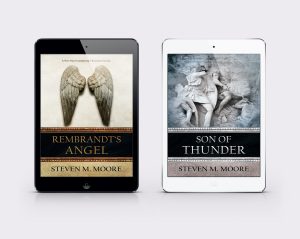 One other example from my own writing: Rembrandt’s Angel started the “Esther Brookstone Art Detective” series, a nine-novel one. That first novel was an answer to a lingering question I’d had over the many decades after I read Christie’s novels as a kid: Why didn’t Dame Agatha write a story featuring her two famous sleuths together, Miss Marple and Hercule Poirot, solving a crime together? With Esther’s series, I did just that, in a way: Esther is a lot sexier and sprier than Miss Marple (Americans might call her a cougar), even though she’s a decade older than Bastiann van Coevorden; and he only looks like the actor who so often played Poirot. But they were the answer to my childhood question.
One other example from my own writing: Rembrandt’s Angel started the “Esther Brookstone Art Detective” series, a nine-novel one. That first novel was an answer to a lingering question I’d had over the many decades after I read Christie’s novels as a kid: Why didn’t Dame Agatha write a story featuring her two famous sleuths together, Miss Marple and Hercule Poirot, solving a crime together? With Esther’s series, I did just that, in a way: Esther is a lot sexier and sprier than Miss Marple (Americans might call her a cougar), even though she’s a decade older than Bastiann van Coevorden; and he only looks like the actor who so often played Poirot. But they were the answer to my childhood question.
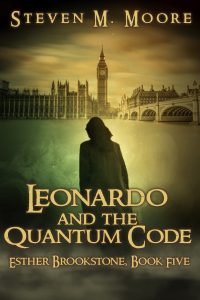 The second book in the “Esther Brookstone” series, Son of Thunder, was more motivated by my lifelong interest in St. John and trying to write some historical fiction, but I realized after finishing that novel that it owes something to Dan Brown’s The DaVinci Code—it’s like Brown’s story done right in the sense that, yes, it’s historical fiction like Brown’s, but my story is woven into and around what is known about the saint and the Renaissance artist Botticelli. (You’ll have to read my novel to understand why they’re in the same novel with Esther! Brown’s book, in contrast, has been shown to be full of historical errors, so it can’t claim to be historical fiction. (My Leonardo and the Quantum Code, #5 in the “Esther Brookstone” series, could almost be considered a parody of The DaVinci Code!)
The second book in the “Esther Brookstone” series, Son of Thunder, was more motivated by my lifelong interest in St. John and trying to write some historical fiction, but I realized after finishing that novel that it owes something to Dan Brown’s The DaVinci Code—it’s like Brown’s story done right in the sense that, yes, it’s historical fiction like Brown’s, but my story is woven into and around what is known about the saint and the Renaissance artist Botticelli. (You’ll have to read my novel to understand why they’re in the same novel with Esther! Brown’s book, in contrast, has been shown to be full of historical errors, so it can’t claim to be historical fiction. (My Leonardo and the Quantum Code, #5 in the “Esther Brookstone” series, could almost be considered a parody of The DaVinci Code!)
Okay, I’ve now told you about the origins of Esther and Bastiann, here and within and in end notes of some of the “Esther Brookstone” novels. (The “within,” by the way, corresponds to the running tease of Esther wags at Scotland Yard had by calling Esther Miss Marple—that’s color for the story, and it irks Esther, the old sleuth.) Let me now hasten to say that this isn’t plagiarism. It’s my unique homage to Christie, who began the entire subgenre of British-style mysteries just as much as Dashiell Hammett and others began hard-boiled American-style detective stories. Homages aren’t plagiarism.
While as an author I can see influences on my own opus mostly originating in my distant past, I doubt that readers can, just like I have a hard time seeing influences on the author of any novel I’m reading. (The one exception is found in the novels of Alex Gerlis. They’re obviously influenced by John Le Carre’s opus, but Alex does a much better job than John because Alex is a minimalist! Moreover, Alex’s WWII stories are just as important to twentieth-century events as John’s are for the Cold War.)
Of course, as readers, we all should just sit back in our recliners and enjoy a good book without worrying about the author’s influences and motivations!
***
Comments are always welcome. (Please follow the rules listed on the “Join the Conversation” web page. If you don’t, your comment will be declared to be spam.)
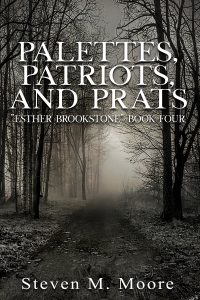 The “Esther Brookstone Art Detective” series. Each one of these nine novels in the British-mystery style is a unique study of the very English Esther and her beau and subsequent husband, the Dutchman Bastiann van Coevorden. The first three novels are in both print and ebook editions; and two novels, Defanging the Red Dragon and Intolerance, are free PDF downloads (see the “Free Stuff & Contests” web page). The rest of the novels only have ebook versions. You can read them in any order. (All ebook versions are available wherever quality ebooks are sold, although the last aren’t available on Amazon.) There are many hours of mystery and suspense for readers here, going from the usual police procedurals to international spy thrillers.
The “Esther Brookstone Art Detective” series. Each one of these nine novels in the British-mystery style is a unique study of the very English Esther and her beau and subsequent husband, the Dutchman Bastiann van Coevorden. The first three novels are in both print and ebook editions; and two novels, Defanging the Red Dragon and Intolerance, are free PDF downloads (see the “Free Stuff & Contests” web page). The rest of the novels only have ebook versions. You can read them in any order. (All ebook versions are available wherever quality ebooks are sold, although the last aren’t available on Amazon.) There are many hours of mystery and suspense for readers here, going from the usual police procedurals to international spy thrillers.
Around the world and to the stars! In libris libertas!
